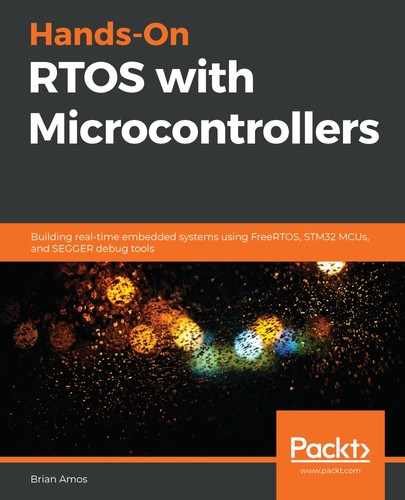Bare-metal firmware is considered (for our purposes) to be any firmware that isn't built on top of a preexisting kernel/scheduler of some type. Some engineers take this a step further, arguing that true bare-metal firmware can't use any preexisting libraries (such as vendor supply hardware abstraction libraries)—there is some merit to this view as well. A bare-metal implementation has the advantage that the user's code has total control of all aspects of the hardware. The only way for the main loop code execution to be interrupted is if an interrupt fires. In this case, the only way for anything else to take control of the CPU is for the existing ISR to finish or for another higher-priority interrupt to fire.
Bare-metal firmware solutions excel when there is a small number of relatively simple tasks to perform—or one monolithic task. If the firmware is kept focused and best practices are followed, deterministic performance is generally easy to measure and guarantee due to the relatively small number of interactions between ISRs (or in some cases, a lack of ISRs). In some extreme cases for heavily loaded MCUs (or MCUs that are highly constrained in ROM/RAM), bare-metal is the only option.
As bare-metal implementations get to be more elaborate when dealing with events asynchronously, they start to overlap with functionality provided by an RTOS. An important consideration to keep in mind is that by using an RTOS—rather than attempting to roll your own thread-safe system—you automatically benefit from all of the testing the RTOS provider has put in. You'll also have the opportunity to use code that has the power of hindsight behind it—all of the RTOSes available today have been around for several years. The authors have been adapting and adding functionality the entire time to make them robust and flexible for different applications.
